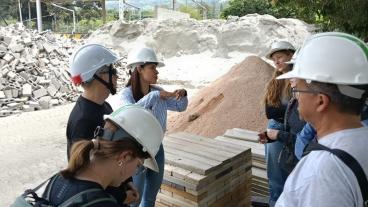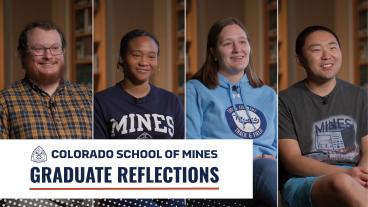By Todd Neff
Forests across the Mountain West have gone orange and faded to gray. Since about the turn of the millennium, the mountain pine beetle’s appetite for lodgepole has killed off some four million acres of trees in Colorado and Wyoming alone. That the larvae of an insect the size of a grain of rice can bring such destruction is in itself a wonder of nature.
The changes go far beyond appearance, and while questions about the effects of so many dead trees on forest fires may be the most obvious, some of the beetles’ biggest impacts lie downstream. Pine beetles are shrinking the snowpack, hastening runoff and parching summer soil. The bugs have affected everything from the molecular habits of soil metals to the makeup of soil microbes. They have changed the chemistry of forest earth and increased the loads of carcinogens flowing through water treatment plants.
It’s more than a provincial concern of cabin dwellers and ski condo owners. Mountain runoff into the Colorado and Platte rivers alone sustains 30 million people and 1.8 million acres of irrigated farmland. With a warming climate, the deep freezes that once killed off pine beetles will be fewer, threatening more frequent, longer lasting epidemics affecting the region in ways science is only beginning to grasp. But science will soon catch up. A Mines-led team of hydrologists, microbiologists, geochemists, numerical modelers and social scientists is sharpening the picture of pine beetle impacts below a given dead tree and connecting how those changes trickle out to watersheds and the people who depend on them.
A five-year, $3 million National Science Foundation grant and $375,000 in Colorado state matching funds are fueling the effort. Mines Associate Professor Reed Maxwell, who specializes in hydrological modeling, serves as principal investigator. His Mines office is big and sparse. Its notable features include a high-end road bike outfitted with commuter lights, a wall clock whose arms at noon point to the cube root of 1728, and a 28-square-foot whiteboard, mostly empty on this day.
“The water quality in, say, Lake Granby has a lot to do with a watershed area that’s heavily beetle impacted,” Maxwell said. “We want to move from tree to plot to hillslope to watershed scale. That’s one of the big tasks in our grant, and we’re developing the models from scratch. They aren’t really out there.”
There are plenty of hypotheses, supported — but also contradicted — by a growing number of studies. Combined, the story goes something like this: Pine beetles kill trees, which drop their needles and load the soil with carbon as they break down. Their denuded branches let more snow into the ground, but they also stop less sunlight and block less wind, accelerating melting and runoff. The water moves through the hillslope and watershed faster. That influences how fast it reacts chemically, which in turn affects carbon balance, metal absorption and microbial makeup. At larger scales, the flow paths and speeds of rivulets, creeks and rivers change, too. The sum of the impacts shifts water quality, quantity and timing to new equilibriums, Maxwell said.
But no one knows for sure, which is why the team of eight faculty, eight graduate students and two postdoctoral researchers from Mines and Colorado State University has much to do.
If recent studies are any indication, the pine beetle plot will have many twists. Mines hydrological engineering PhD student Kristin Mikkelson spent three summers doing field work in Pennsylvania Gulch near Breckenridge and Keystone Gulch, focused on testing surface waters for copper and zinc. Dissolved organic carbon, more abundant with all the fallen pine needles, latches onto metals and keeps them mobile, boosting their soil concentrations and, one would think, the volume of metals flowing in surface waters. But while soil concentrations of metals have indeed been higher, Mikkelson said, “We’re not seeing it in the surface water.”
Another curiosity relates to municipal water quality. In a separate Mikkelson-led study, published in Nature Climate Change in October 2012, she and Mines colleagues reported that higher concentrations of organic carbon from pine needle pulses react with chlorine-based disinfectants in water treatment plants and produce more carcinogenic disinfectant byproducts. The study compared water treatment plants in five pine-beetle-impacted watersheds with four controls and linked increases in disinfectant byproducts with the degree of pine beetle infestation. The surprise, Mikkelson said, was that one class of disinfectant byproducts, known as trihalomethanes, spiked while others, haloacetic acids, didn’t.
“When we saw the jump in only the one, it was clear that the pine beetle epidemic is not only changing the amount of organic carbon, but also its composition,” she said.
Mikkelson is following up with experiments in which she percolates artificial rainwater presoaked with brown pine needles through columns of soil. “We’re measuring how that organic carbon is changing as it goes through the columns — what parts are partitioning and sorbing into the soil and which metals they’re grabbing.”
That effort complements Mines hydrology PhD student Lindsay Bearup’s work. In a Berthoud Hall lab, Bearup pulled a one-gallon Ziploc® bag from a refrigerator. Its dirt would find its way into jars, and then vials.
“I have jars and jars of dirt – really exciting!” she joked.
Bearup had collected it from a site north of Bear Lake in Rocky Mountain National Park. After hiking the eight miles in, she had filled bags of dirt beneath trees in various states of beetle impact – some green and untouched, some orange, some gray. In the lab, she had put single grams of soil into 50 milliliter falcon tubes and added chemicals to determine how organic fractions differed and what metals were present. This information, combined with water captured in a rain gauge (to determine precipitation volume and stable isotopes) and other data, may help explain the surface water metal mystery, among other things.
“I’m looking at where metals are associated with soils,” she said. “It’s interesting because organic matter is changing as trees die.”
Those changes probably affect the microbial communities in forest soils, added Jonathan Sharp, a Mines assistant professor who focuses on the intersection of microbiology, geology and hydrology. With the pine beetle work, Sharp is guiding graduate students as they work to determine microbial makeup in soil based on DNA analysis. The theory is that, as trees die, microbial ecosystems face a pulse of needles and lifeless root systems and will evolve accordingly. That, in turn, could ultimately affect the transport of metals and water quality.
“We’re trying to look from the millimeter scale all the way up to the watershed,” Sharp said.
Maxwell’s modeling work will incorporate the team’s fieldwork, as well as data from partners at the U.S. Geological Survey and the University of Colorado, to bridge these scales. One aim is to put new information in the hands of water managers and policymakers. Part of the project, Maxwell said, will involve partnering with water municipalities in Colorado and southern Nevada to help them understand how pine beetles may be affecting the quality of their inflows and how they might adjust their water treatment regimes.
“We’re seeing real water quality changes,” Maxwell said. “At best, this is going to mean an increase in water bills.”
John McCray, a co-investigator and head of Mines' Department of Civil and Environmental Engineering, says the project’s combination of field work, chemical and DNA analysis, and computer modeling could help answer questions well beyond those posed by the pine beetle.
“The processes we’re looking at really have to do with any sort of change in mountain and forest hydrology,” McCray said. “Those could be changes due to fire, development or climate change.”
It’s good that the work’s happening now, he added. “Pine beetles appear to have significant effects on hydrology and water quality, and we’ve only had a limited window in which to study this.”
This article appears in the 2013-14 edition of Mines' research magazine, "Energy and the Earth."



